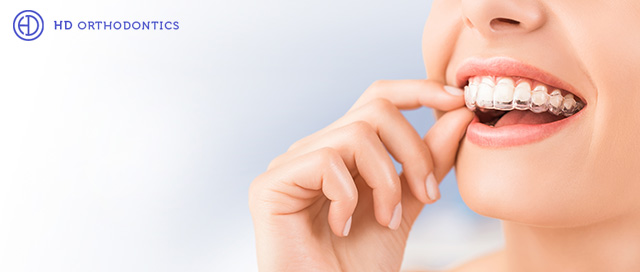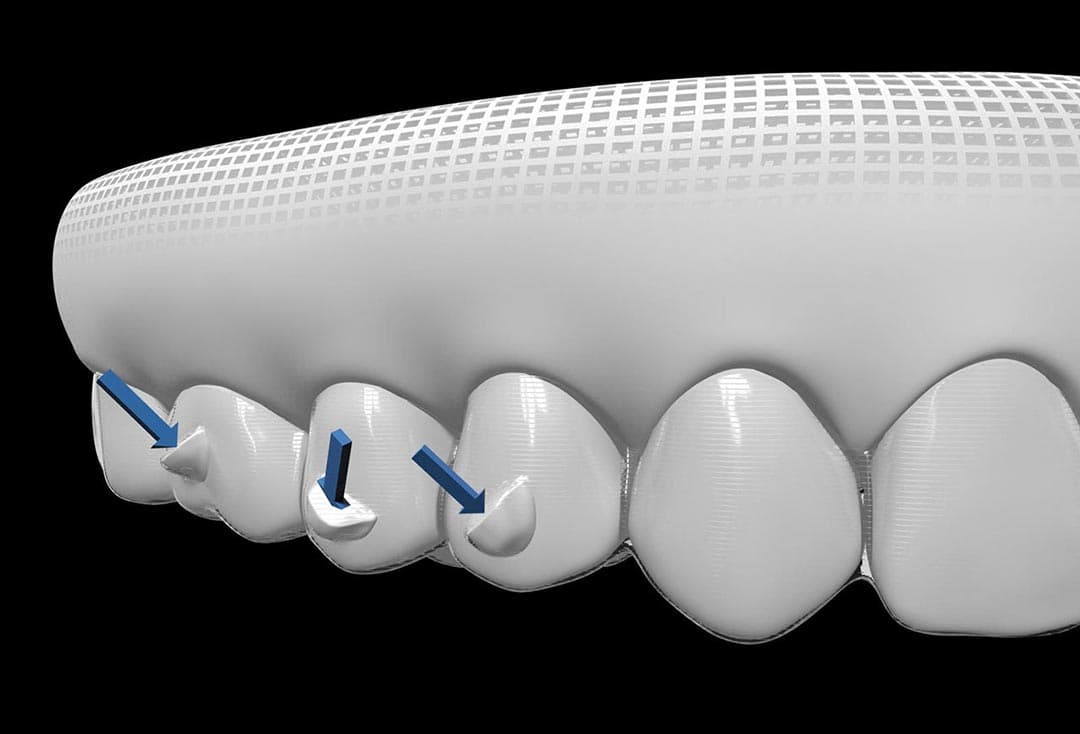Invisalign for Teens: A Modern Solution to Straightening Young Smiles
Invisalign for Teens: A Modern Solution to Straightening Young Smiles
Blog Article
Invisalign vs. Typical Braces: Which Option Is Right for You?
When taking into consideration orthodontic therapy, the option in between Invisalign and standard dental braces presents several vital variables that warrant careful assessment. Invisalign offers a discreet option with detachable aligners, while standard dental braces offer an extra visible yet efficient remedy for severe misalignment. Each alternative includes distinct benefits and drawbacks connected to visual appeals, convenience, therapy period, and price. Recognizing these subtleties is vital for making a notified decision that aligns with your personal preferences and way of living. The question continues to be: which choice will ideal meet your orthodontic needs and assumptions?
Introduction of Treatment Choices

In comparison, standard braces contain metal braces and cords that are bonded to the teeth. This method uses continual stress with time to achieve alignment. While efficient for complex orthodontic concerns, standard braces need regular visits for modifications and can pose difficulties in maintaining dental health as a result of the trouble of cleaning about cables and brackets.
Both options have their advantages, and the selection often rests on specific oral problems, way of life preferences, and individual compliance. Inevitably, getting in touch with an orthodontic specialist is vital for figuring out the most ideal therapy plan customized to specific demands. Understanding the subtleties of each option can substantially influence the general success of orthodontic treatment.
Visual Factors To Consider
A substantial variable influencing the option in between Invisalign and typical braces is the visual charm each treatment uses. Invisalign aligners are crafted from clear plastic, making them virtually invisible when used.
On the other hand, standard braces contain metal brackets and cables, which can be much more visible. While developments in orthodontic modern technology have actually brought about the growth of smaller sized brackets and tinted elastics, standard dental braces still keep an even more conspicuous account. For some people, the presence of braces might discourage them from looking for essential therapy.
Inevitably, the option in between Invisalign and typical dental braces may pivot on personal preferences pertaining to looks. Individuals who focus on discernment typically lean toward Invisalign, while those that are less concerned about exposure may choose conventional dental braces. Understanding the visual implications of each choice is critical for making a notified decision that lines up with one's way of living and preferences.
Comfort and Convenience

In terms of benefit, Invisalign aligners are removable, enabling people to appreciate their preferred foods without limitation and preserve optimal dental health. Brushing and flossing are streamlined, as the aligners can be secured throughout these routines, whereas standard braces call for cautious navigating around brackets and cords.
In comparison, traditional dental braces require normal adjustments, making them less convenient for those with active timetables. In general, the convenience and benefit of Invisalign make it an appealing choice for several individuals seeking orthodontic treatment.
Therapy Duration and Performance
While both Invisalign and typical dental braces are effective in fixing dental misalignments, the duration of therapy can differ significantly in between both options. Typically, Invisalign therapy can take anywhere from 12 to 18 months, relying on the intricacy of the situation. The clear aligners work by slowly shifting teeth right into their desired placements, and normal follow-ups with an orthodontist assistance guarantee progression stays on the right track.
On the other hand, conventional braces typically call for a longer commitment, generally varying from 18 months to 3 years. This is because of their set nature and the usage of wires and brackets, which can be much more effective for extreme imbalances find more and intricate situations (Invisalign). The treatment performance of traditional dental braces is well-documented, as they allow for precise changes and better control over tooth motion
Ultimately, the option in between Invisalign and conventional braces might rest on both the expected therapy period and the details oral problems available. Consulting with an orthodontist is important, as they can provide customized recommendations based upon specific needs, making sure the picked method aligns with wanted outcomes and timeframes.
Expense Comparison and Insurance Policy Options
Price plays a significant function in the decision-making procedure for individuals thinking about orthodontic treatment, whether going with Invisalign or typical dental braces. Usually, the cost of Invisalign arrays from $3,000 to $8,000, while traditional dental braces typically set you back in between $2,000 and $6,000. Elements influencing these expenses include the complexity of the situation, the duration of therapy, and geographical area.
Insurance policy insurance coverage can significantly affect out-of-pocket costs. Lots of oral insurance policy plans provide partial protection for orthodontic therapies, but the specifics can vary commonly. It is vital for clients to review their insurance plans to determine the level of coverage for either alternative. Normally, typical braces might be a lot more often covered by insurance plans contrasted to Invisalign, which some insurance providers categorize as an aesthetic treatment.
Additionally, a number of orthodontic techniques offer flexible settlement strategies, making both therapy alternatives extra obtainable. People ought to ask about prospective financing choices and discount rates for upfront settlements. Evaluating the complete price, consisting of insurance benefits and payment strategies, is crucial for making an informed choice that straightens with both aesthetic preferences and budget plan considerations.

Verdict
In recap, the selection between Invisalign and conventional dental braces depends upon numerous variables, consisting of aesthetic choices, comfort, therapy duration, and price. Invisalign provides a very discreet, removable choice that assists in oral health and nutritional flexibility, while standard braces may be preferable for More Info complicated dental issues and frequently come with a lower cost factor. Eventually, appointment with an orthodontist is necessary to examine individual scenarios and figure out the most suitable therapy option for achieving ideal dental alignment.
When taking into consideration orthodontic therapy, the option in between Invisalign and typical braces offers several crucial factors that merit careful analysis.Comparing Invisalign and traditional braces reveals distinct treatment options for orthodontic modification.While both Invisalign and conventional braces are effective in fixing oral misalignments, the duration of treatment can vary substantially between the two options.Price plays a significant duty in the decision-making procedure for individuals thinking about orthodontic therapy, whether opting for Invisalign or conventional braces.In recap, the selection between Invisalign and typical braces see this hinges on multiple aspects, including visual preferences, convenience, treatment duration, and price.
Report this page